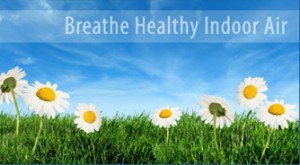LEED Rating System & Indoor Air Quality

A report from Environment & Human Health, Inc (EHHI) of the US argues that the USGBC’s LEED rating system favors energy efficiency over indoor environmental quality.
“There is an urgent need to include human health in the definition of what it means to be ‘green’ or environmentally responsible,” said Dr. Peter Rabinowitz, director of Clinical Services at Yale School of Medicine’s Occupational and Environmental Medicine. Many corporations and other institutions have adopted LEED standards without fully understanding that energy-conservation efforts often reduce the exchange of indoor and outdoor air, which can cause synthetic chemicals to concentrate within buildings.
“EHHI is especially concerned that the LEED program is now providing the false impression that the buildings it certifies protect human health. LEED’s highest rating, Platinum, is attainable without earning any credits for indoor air quality protection,” EHHI states in a press release. “Although LEED has effectively encouraged energy efficiency in buildings, tighter buildings often concentrate chemicals released from building materials, cleaning supplies, fuel combustion, pesticides and other hazardous substances,” said John Wargo, lead author of the study, and Professor of Risk Analysis and Environmental Policy at Yale University. This includes substances common in building materials, like phthalates (used in floor and wall coverings); short-chain chlorinated paraffins (used in flame retardants); and perfluorinated chemicals (used in carpets and upholstery). All of these are listed as ‘chemicals of concern’, according to the US Environmental Protection Agency.
“The underlying problem is that thousands of different chemicals, many of them well recognized to be hazardous, are allowed to become components of building materials. Very few of these chemicals have been tested to identify their toxicity, environmental fate or the danger they pose to human health. “Although the primary stated purposes of the USGBC are to promote both energy efficiency and human health, even its most prestigious Platinum award does little to ensure that hazardous chemicals are kept out of certified buildings,” said Wargo.
“LEED needs to be amended to better account for the potential health hazards of the toxic chemicals used in modern building materials. Energy efficiency and sustainability are laudable goals, and LEED has done much to advance them. But health is important, too, and now it needs to receive careful consideration in building design,” said Dr. Philip Landrigan, Ethel H. Wise Professor and chairman, Department of Preventive Medicine, at Mt Sinai School of Medicine in New York, who reviewed the report.
“Green building technologies — even while they bring important energy benefits — have the potential to jeopardize the indoor air we breathe, the water we drink and the overall safety of our habitats,” said Dr. Mark Cullen, Chief of Internal Medicine at Stanford University Medical School, who also reviewed the report. In response to the report, USGBC senior VP Scot Horst said: “There is validity in what these people are saying, and we want to work with them to improve LEED. LEED could say there should be no chemicals in any building and no energy used and no water, and every building should give back water and energy. We could do all that, and no one would use the rating system. We can only take the market as far as it is willing to go.”
EHHI is a non-profit organization dedicated to protecting human health from environmental harms through research, education and the promotion of sound public policy. It comprises doctors, public health professionals and policy experts committed to the reduction of environmental health risks to individuals.


